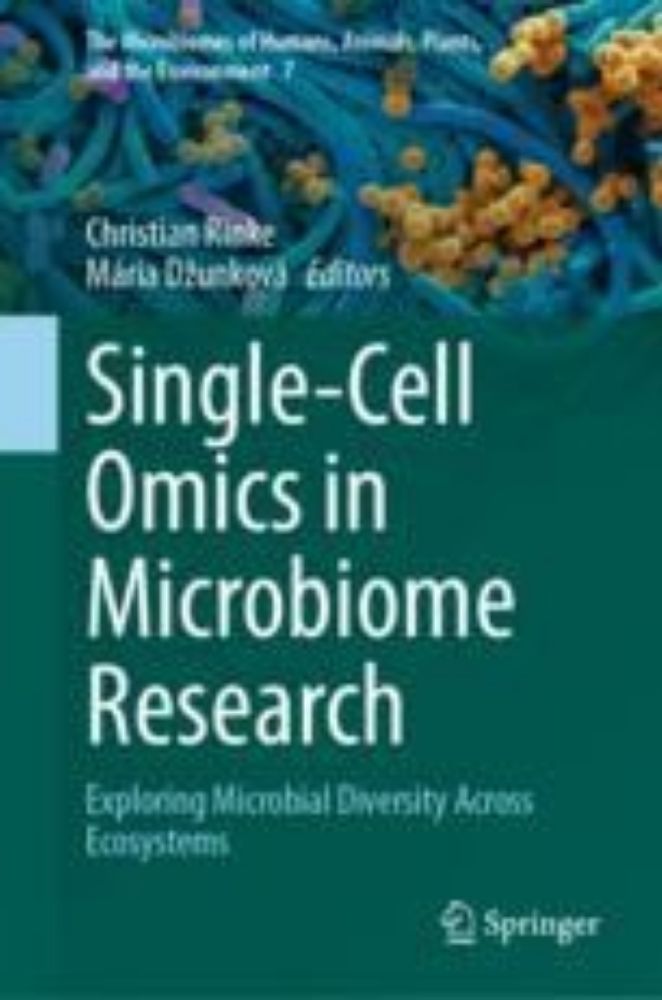





link.springer.com/book/10.1007...
#microsky #single-cell @i2sysbio.es

link.springer.com/book/10.1007...
#microsky #single-cell @i2sysbio.es
Microbial fraction is now prokaryotic fraction, easier to specify input genomes.
@i2sysbio.es #bioinformatics #nudibranchs

@i2sysbio.es #bioinformatics #nudibranchs
I'm looking for studies where both Illumina and ONT sequencing were performed on the same samples from soil, human, ruminent, and other sample types for comparison. Bonus if those studies include PacBio data.
Please help and share!
@chrisrinke.bsky.social and to all book contributors, coming from @i2sysbio.es, @jgi.doe.gov and many other institutes I couldn't find on BlueSky
link.springer.com/book/10.1007...
#microsky #singlecell #genomics 🧪🦠

@chrisrinke.bsky.social and to all book contributors, coming from @i2sysbio.es, @jgi.doe.gov and many other institutes I couldn't find on BlueSky
link.springer.com/book/10.1007...
#microsky #singlecell #genomics 🧪🦠
#microbiology #protists #eukaryotes
@isme-microbes.bsky.social
academic.oup.com/ismej/articl...

#microbiology #protists #eukaryotes
@isme-microbes.bsky.social
academic.oup.com/ismej/articl...
vConTACT3 delivers a unified, scalable, and transparent framework for genome-based virus taxonomy — helping translate big viral data into systematic classification.
🔗 Read the preprint: doi.org/10.1101/2025...
Improvements details below 👇

vConTACT3 delivers a unified, scalable, and transparent framework for genome-based virus taxonomy — helping translate big viral data into systematic classification.
🔗 Read the preprint: doi.org/10.1101/2025...
Improvements details below 👇
rdcu.be/eLtCH

rdcu.be/eLtCH

I uploaded the classic Watson & Crick paper about DNA structure, and the Adviser had this to say about one of the greatest paper endings of the century:

I uploaded the classic Watson & Crick paper about DNA structure, and the Adviser had this to say about one of the greatest paper endings of the century:

www.nature.com/articles/s41...

www.nature.com/articles/s41...

Este video forma parte de una serie de presentaciones del centro sobre sus grupos de investigación.
www.youtube.com/watch?v=JsS6...

Este video forma parte de una serie de presentaciones del centro sobre sus grupos de investigación.
www.youtube.com/watch?v=JsS6...
#bioinformatics #congress #microsky 🧬🖥️🦠🧪
👉One Health Pangenome 25
The microbial pangenome in one health
December 2-5, 2025, Valencia, Spain
www.alocongress.com/pangenome2025
👉New Deadlines
Abstract Submission: Oct 31st, 2025
Early Bird Registration: Nov 14th, 2025
Students’ Fee Discount
🧬🖥️🔬🌱🧪
#bioinformatics #pangenome #science

#bioinformatics #congress #microsky 🧬🖥️🦠🧪
www.uv.es/uvweb/biolog...

www.uv.es/uvweb/biolog...
🖇️Més informació: links.uv.es/6egolOY

#bioinformatics 🖥🧬🧪
Dr. Buceta at @i2sysbio.es welcome applications for 36-month postdocs on:
👉 Mechanical markers of tissue dysfunction due to ageing – digital twins & machine learning
Details here: fgcsic.es/convocatoria...
📩 Contact [email protected] to shape your proposal!
@epimechfc.bsky.social

#bioinformatics 🖥🧬🧪
#microsky #viruses #coronavirus 🧬🖥🧪🧫🦠
www.nature.com/articles/s41...

#microsky #viruses #coronavirus 🧬🖥🧪🧫🦠




Esta entrevista forma parte de una serie de vídeos de presentación del #I2SysBio (@csic.es- @uv.es) sobre sus grupos de investigación
youtu.be/5mr4st5Vfyw

Esta entrevista forma parte de una serie de vídeos de presentación del #I2SysBio (@csic.es- @uv.es) sobre sus grupos de investigación
youtu.be/5mr4st5Vfyw
🔗Te invitamos a leer su propuesta y votarla.
💜¡Enhorabuena, Pilar!
www.elespanol.com/mujer/lastop...

🔗Te invitamos a leer su propuesta y votarla.
💜¡Enhorabuena, Pilar!
www.elespanol.com/mujer/lastop...
The study has been published in Nature Communications.
www.i2sysbio.es/communicatio...


